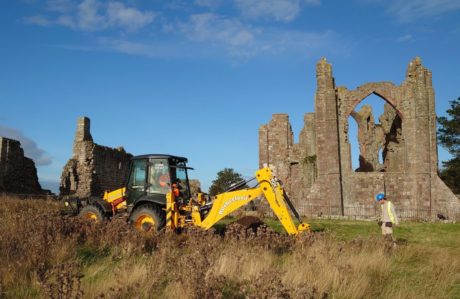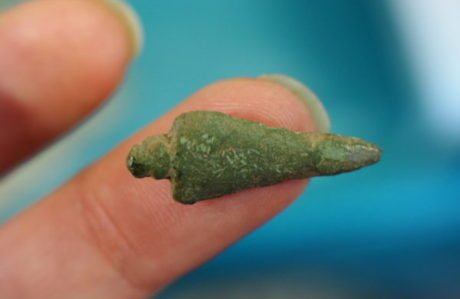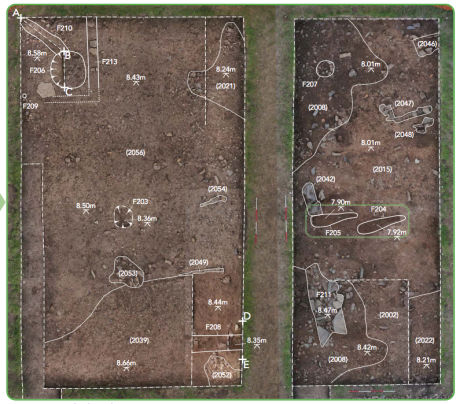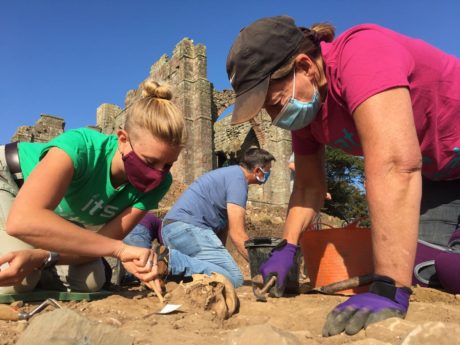
An early medieval smithy, a handful of coins, and a burial with signs of a fatal headwound are among some of the most notable discoveries from this season’s community-powered excavation on Lindisfarne.
We’re now five years into #LindisfarneDig, where we’ve been searching for evidence of life on the island before, during and after the legendary Viking raids.
So far, the dig has been crowdfunded and carried out by our own community, in partnership with Durham University. The discoveries we’ve made together over the last few years have included early medieval namestones, the king from a 1,200 year old tafl set, and two halves of a long-broken sculpture whose origins hail all the way from Ireland.
This year’s discoveries certainly aren’t as shiny, glamorous, or Instagram-worthy, but in archaeological terms they are just as significant. In fact, there was a unanimous feeling among everyone who joined us on site that against all the odds, this was our best season yet. So, what did we find? Let’s take a look…
1. In situ evidence of early medieval metalworking
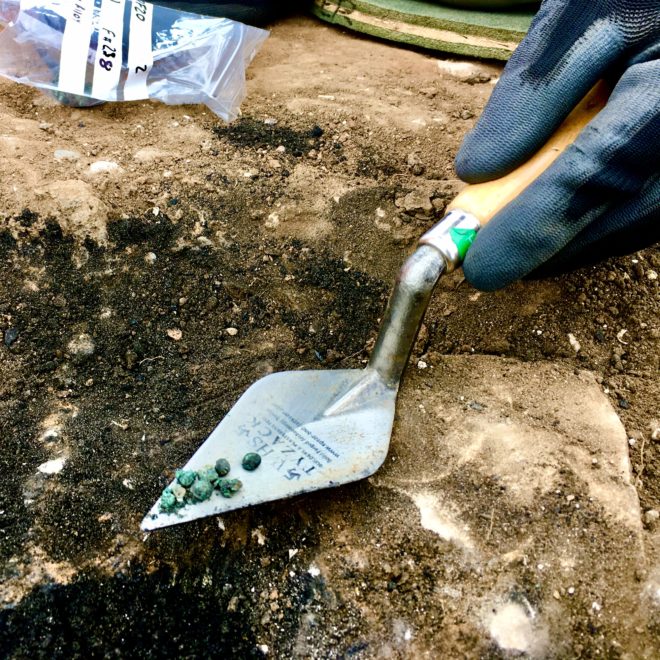
The early medieval monks who lived on Lindisfarne were famous for making beautiful metal artefacts, like altarpieces, booking bindings, and reliquaries, which may have been one of the things that attracted Viking raiders. This year, we found a series of shallow depressions filled with burned material, pieces of slag, and a handful of copper-alloy droplets. Although archaeologists often find early medieval metal artefacts, it is much rarer to find direct, ‘in situ’ evidence for where those items were made. The implications of discovering something like this at a site like Lindisfarne are enormous…
2. Part of an early medieval ‘shack’
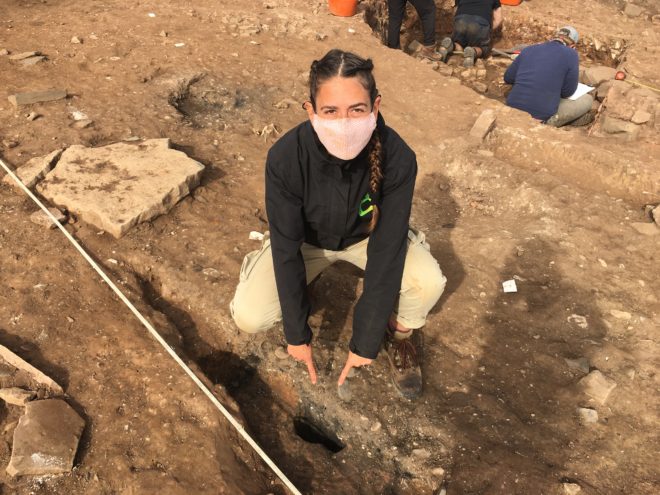
What’s even rarer than finding evidence of early medieval metalworking? Finding evidence of the building where it took place! This year, we found a line of three postholes, inside the remains of a ‘beam slot’- almost indisputable evidence for an early medieval wattle and daub structure. They seem to be contemporary with the stone-based corner of a building that we found a few years ago. While we’re still very much in the speculative phase, our hunch is that they might be part of the same structure – perhaps a lean-to or ‘shack’. In fact, the discoveries looks really similar to the few early medieval smithis that have been found at comparable sites. And even better than that, we found a mix of burned wood (oak), slag and charcoal inside some of the postholes – which would be perfect for radiocarbon dating!
3. A big, burned circular feature or ‘furnace’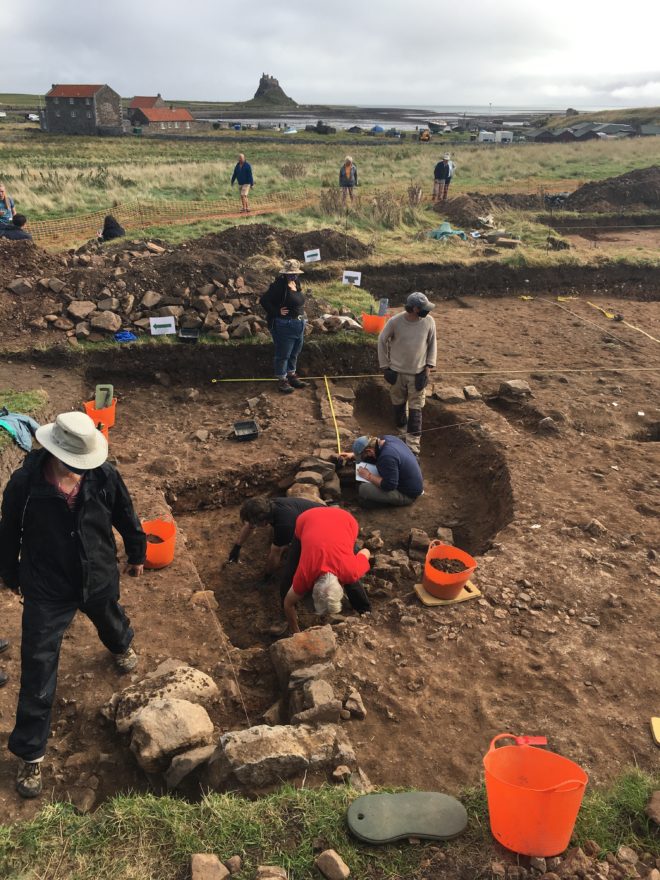
Our team has been arguing over what to call this ‘big, burned, circular feature’, because we’re still not 100% sure what it was for. What we do know is that it’s about 9-10m in diameter, roughly bowl-shaped, and was the site of some seriously high temperature burning. When we first identified the feature two seasons ago, we suspected it might be an oven or a kiln, or possibly a metalworking furnace due to pieces of slag found inside. This year, we finally had our chance to excavate part of it, which not only revealed its sheer size, but also substantial structural evidence, including a possible flue or stoke hole (complete with a layer of burned daub still stuck to the side), and what looks like a shallow wall running through the heart of it. There were also more traces of metal slag, and although we’re still as yet unable to confirm what this ‘high temperature activity area’ was for, we still leaning towards metalworking partly because of other clues lying nearby.
4. Six early medieval coins
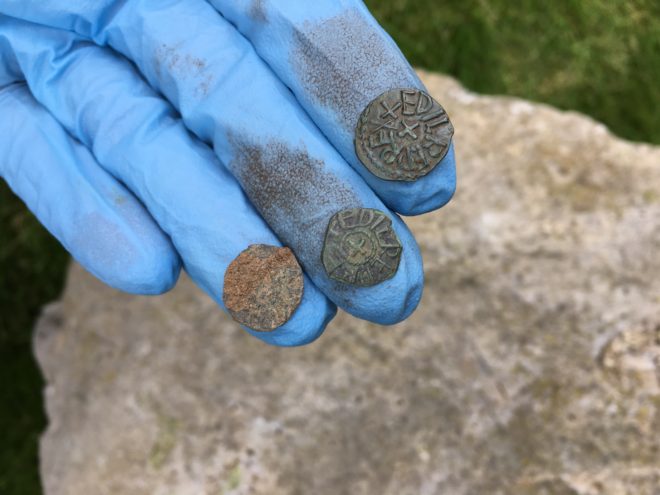
All of the coins we found date to the mid ninth century, including several minted in the time of Aelthred II of Northumbria. This would place the date at around AD 840 – when the Viking on raids were intensifying. From this, we can assume not only that life continued on Lindisfarne after the Viking raids, but that the monastery and settlement here were still thriving centres for trade. The rest of our six coins were all found in a similar area of the trench, but what makes that really exciting, is knowing what they were found beside the metalworking area; excavations at Bamburgh Castle just across from Lindisfarne on the mainland also uncovered a metalworking area, along with 77 coins very close by.
5. …which all adds up to a possible early medieval smithy!
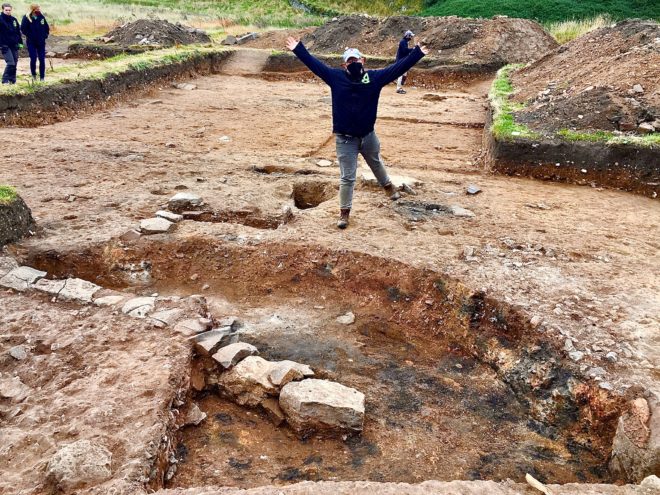
All of the evidence we’ve listed so far points towards an early medieval smithy. It’s not just the in situ metalworking evidence being found in association with a building or ‘shack’; the fact that the coins were found near the metalworking area is actually very significant; excavations at Bamburgh Castle just across from Lindisfarne on the mainland have generated similar findings. They found a metalworking area with 77 coins dating to roughly the same period. The fact that these two sites could be linked both geographically and temporally could really help us understand more about the elusive topic of early medieval metalworking…
6. Evidence of the island’s lay population

Our excavation area includes part of a cemetery, so as is always the case at Lindisfarne, we uncovered multiple burials this year too. We’ve left most of them in place, and only lifted those that were deemed essential (for their own preservation, or for the general understanding of the site). We can already tell that this year’s individuals include men, women, and several parent-child burials, which is similar to our discoveries in previous years. It confirms that the area was likely a cemetery for the lay population, rather than for monks and the religious elite. This is really significant because there’s little historical record of the island’s ‘ordinary people’, making these remainsan important reminder that there wasn’t just one community living on the island at the time of the Viking raids, but two.
7. One individual with signs of a fatal headwound

Over the last few years, we’ve uncovered the remains of a whole variety of individuals – they range in age, sex, burial position, and health. But this is the first time we’ve found an individual with any signs of physical injury. In this case, the individuals appears to have received a fatal blow to the back of the head – there is no sign of healing and the fracture patterns suggest that the blow occurred while the bone was still fresh. Of course, it’s natural for people to ask whether this person might have been injured during a raid, but the answer is that we just don’t know. Is it definitely an injury? What kind of implement might have caused it? And when did it happen? Further analysis, including radiocarbon dating, might help us find out more and for now, we’re simply looking forward to what else our osteologist might be able to tell us.
8. Another burial with a mystery object
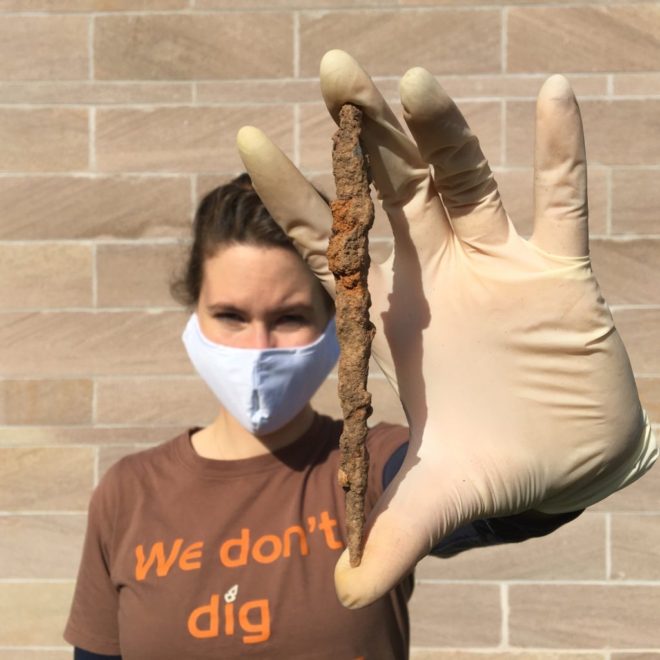
Very few of the burials on Lindisfarne contain artefacts other than namestones, or simple white quartz pebbles which were placed on the graves like flowers. However, this year we came across a particularly unusual find tucked just below the skull of an individual. We initially thought it might be a nail, but after looking closely we’re not so convinced. Guesses have ranged from bodkins to chisels to pins – and even a wand. We can’t wait to see what x-ray examination might tell us about what lies beneath the rust.
9. And another that *might* have been buried with shells
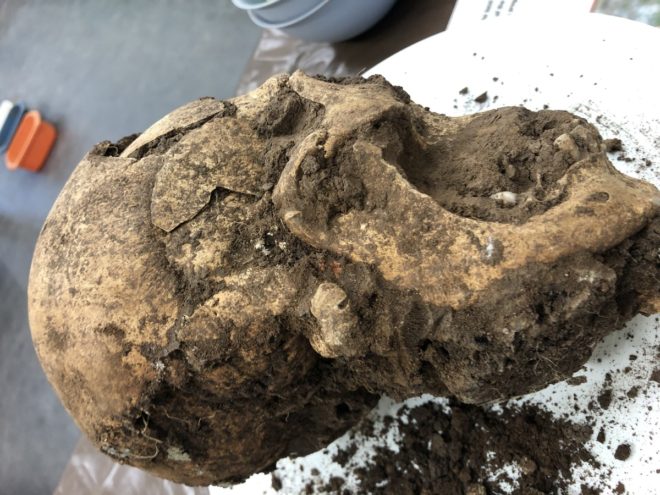
Another burial caught our attention when we noticed that one of the skulls had a winkle shell by each ear, and an oyster shell at the back of the cranium. We’ve often found white quartz with burials, but never previously shells. It’s pretty intriguing, but at this point it remains unclear whether they were placed there intentionally, or they were just part of the backfill. We’ll have to wait for further examinations to be sure…
10. A white quartz pebble with a hole in it!
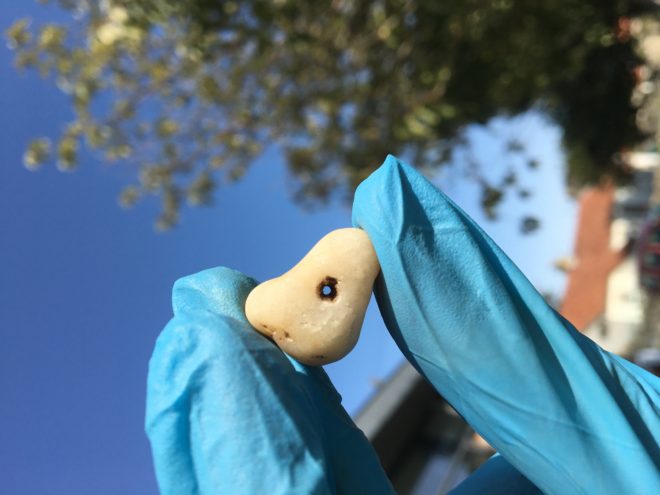
If you’ve been following our progress over the last few years, you’ll know that we’re all fascinated by the white quartz pebbles that adorn the burials here on Lindisfarne. We’ve found them in all shapes and sizes – some as large as an egg, others as small as a sunflower seed. But never have we have found one with a hole in it before. While at first we thought it might be natural, quartz is incredibly hard and the hole appears to have drilled edges. So, was it once worn as a pendant or carried as a lucky charm? We’ll probably never know for sure, but it’s proof that artefacts don’t have to big, glamorous, or shiny to be attention-grabbing and personal!
11. And finally… that there is plenty more to come back for next year!

With plenty of ‘Safe Dig’ measures in place, and blessed by continuous good weather, we’ve had a fantastic season of excavation against all the odds. Such a rich site never fails to deliver when it comes to archaeology, and every year brings us closer to solving the puzzle of Lindisfarne. For now, our finds from this year will be sent for further analysis, and hopefully we’ll see some fascinating updates very soon. As for the next dig season, we just can’t wait to get stuck back in …
